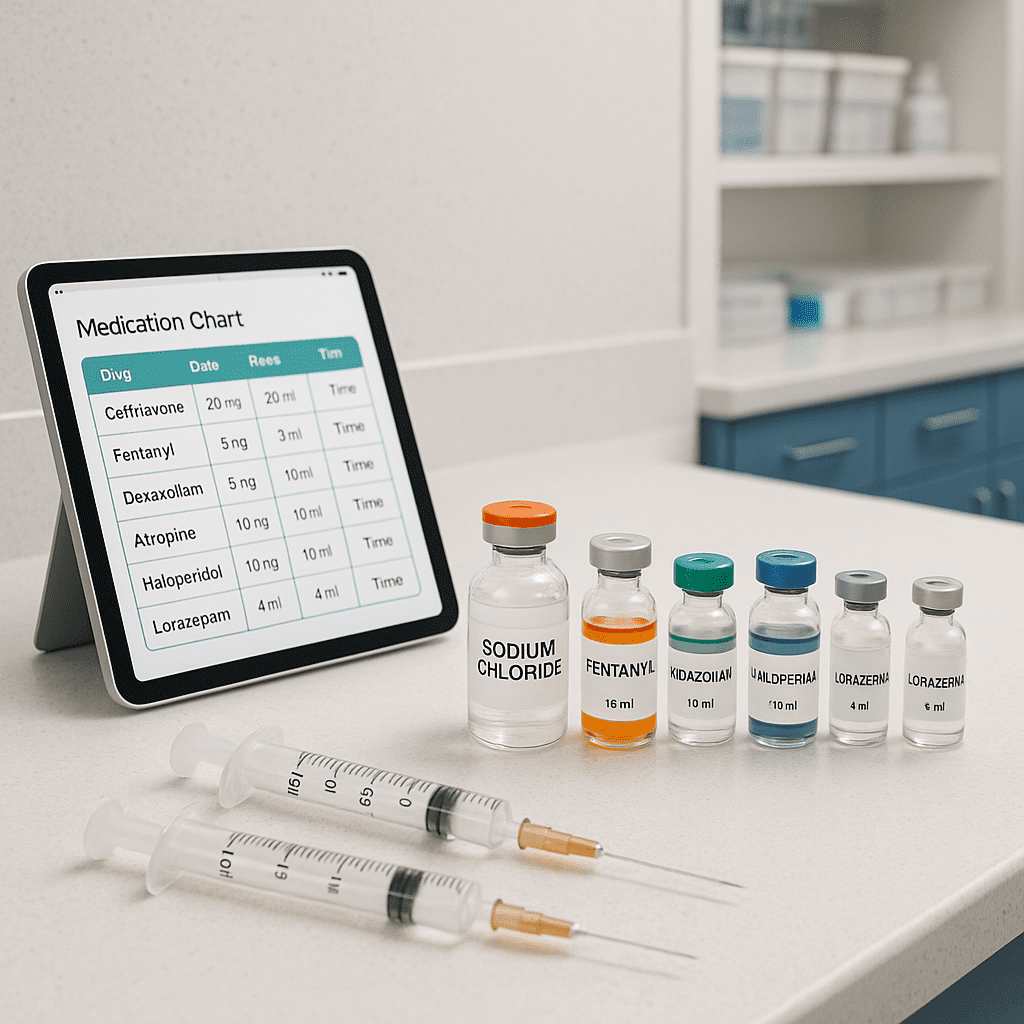Medication safety is one of the most critical responsibilities in nursing practice. As a registered nurse (RN), understanding how drugs interact — and how to prevent medication errors — is key to ensuring patient safety and passing the NCLEX exam. Drug interactions can have serious consequences, from reduced therapeutic effects to life-threatening complications. Every nurse must know how to identify risks and implement safe medication practices.
💊 What Are Drug Interactions?
A drug interaction occurs when one medication affects the activity, absorption, metabolism, or excretion of another. These interactions may lead to increased toxicity or decreased drug effectiveness. Nursing professionals must understand these relationships to provide safe and effective care.
There are three primary types of drug interactions that every RN nurse should remember:
- Drug-Drug Interactions – When two medications react (e.g., warfarin and aspirin increase bleeding risk).
- Drug-Food Interactions – When certain foods alter drug absorption (e.g., grapefruit juice increases statin toxicity).
- Drug-Disease Interactions – When a medical condition worsens due to a specific medication (e.g., beta-blockers worsening asthma).
🧠 Why Drug Interaction Knowledge Matters in Nursing
Understanding drug interactions is not only essential for patient safety but is also a common topic on the NCLEX. Registered nurses are often the last line of defense in preventing medication errors. This is why pharmacology and medication safety are heavily featured in nursing bundles and review materials.
A well-prepared nurse will:
- Evaluate all prescribed medications before administration.
- Check for potential interactions using trusted drug databases.
- Educate patients about possible side effects and safe medication use.
⚠️ Common Drug Interactions Nurses Should Know
Here are some examples often encountered in clinical and NCLEX scenarios:
- Warfarin + NSAIDs → Increased risk of bleeding.
- Digoxin + Furosemide → Increased risk of digoxin toxicity due to potassium loss.
- ACE inhibitors + Potassium supplements → Risk of hyperkalemia.
- Statins + Grapefruit juice → Risk of muscle toxicity and rhabdomyolysis.
- MAO inhibitors + Tyramine-rich foods → Hypertensive crisis.
Recognizing these patterns helps RN nurses anticipate adverse effects and act proactively.
🩺 Nursing Responsibilities in Preventing Drug Errors
1. Verify the “Six Rights” of Medication Administration
Every nurse must confirm:
- Right patient
- Right medication
- Right dose
- Right route
- Right time
- Right documentation
This is a foundational NCLEX concept and part of safe nursing practice.
2. Use Drug Interaction Checkers
Before giving medications, registered nurses should check reputable resources (Lexicomp, Micromedex, or institutional systems) for any potential interactions.
3. Monitor Patients Closely
Observe for new or worsening symptoms after medication administration, especially in high-risk patients like the elderly or those with renal/hepatic impairment.
4. Communicate with the Healthcare Team
If an interaction risk is identified, notify the prescribing provider and pharmacist. Collaboration is essential for safe medication management.
5. Educate Patients and Families
Teach patients about avoiding over-the-counter drugs or supplements without consulting a healthcare provider. Patient education is a vital nursing responsibility and NCLEX-tested topic.
💡 NCLEX Tips for Nurses
On the NCLEX, expect questions testing your ability to identify risky combinations and prioritize interventions. For example:
- If a patient is prescribed warfarin and begins taking ibuprofen, what should the nurse do?
→ Correct answer: Notify the provider due to increased bleeding risk. - If a patient on lithium begins a diuretic, what is the RN nurse’s next step?
→ Monitor lithium levels — risk of toxicity.
Understanding these scenarios ensures both NCLEX success and safe real-world nursing practice.
🧩 The Role of Nursing Bundles in Medication Safety
Nursing bundles often include pharmacology study sheets, drug compatibility charts, and NCLEX-style quizzes. These tools help nursing students and registered nurses strengthen their clinical judgment and reduce medication errors. Incorporating such resources into daily practice enhances both learning and safety.
🧠 Key Takeaway for Registered Nurses
Medication safety is a cornerstone of nursing care. Knowing how drugs interact, identifying risk factors, and applying the “six rights” prevent life-threatening errors. Whether preparing for the NCLEX or caring for patients, every RN nurse must stay vigilant, informed, and proactive in preventing drug interaction-related complications.
💬 FAQs
Interactions between anticoagulants, diuretics, and cardiac drugs are the most frequent. Registered nurses must review each patient’s medication list carefully.
By double-checking orders, verifying the “six rights,” and using interaction checkers before administration — all key steps in safe nursing practice.
The NCLEX emphasizes patient safety and clinical judgment, so mastering pharmacology and drug interactions is crucial for success.
Stop the medication if necessary, monitor the patient, and report immediately to the provider for further evaluation and treatment.

